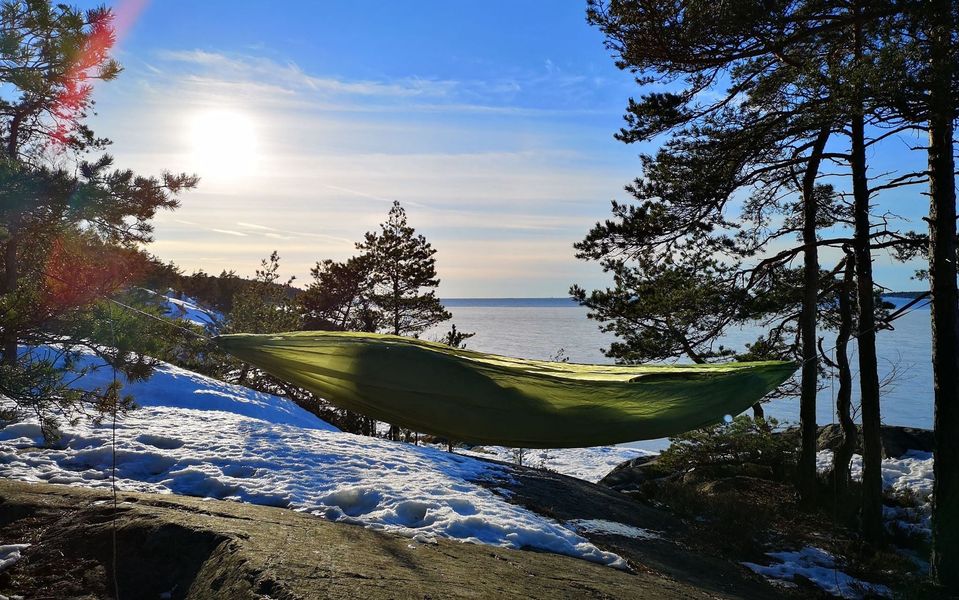On that memorable winter night, the cold was not an issue. The wind blew, the cold decorated nature with frost, and all you needed for happiness was her presence, her warmth.
And the desire that every next winter night will have the face of the first one – the one you spent in the arms of… comfort temperature. ?
Before you let yourself be seduced by visions straight from cheap pulp romances, which your imagination suggests, know one thing – for more or less mad scientists you will always be just a kind of zero-sum template crammed into a framework of soulless numbers and graphs.
To make it more interesting this template has its ideal model with an “old-fashioned” division into two sexes. The model man is 173cm tall, weighs 73kg and is a healthy 25 year old. The woman, on the other hand, weighs 160cm at 60kg and is also healthy, young and worry-free. Both feel perfectly well (in the thermal sense) when their skin temperature is no lower than 32.9°C (male) and 32.8°C (female). Any deviation from this limit will be perceived as a cold feeling, i.e. a loss of thermal comfort, and then a memorable winter night will become a nightmare shivering with cold instead of a pleasant memory.
Comfort temperature – internal factors
In fact, what temperature you feel comfortable at is a combination of many factors. Your gender, distribution and percentage of body fat, age, hydration, degree of fatigue, satiety, and finally, external factors like humidity, wind, and even, to some extent, atmospheric pressure. A strong averaging assumes that the thermal comfort temperature for sleeping is between 16°C and 22°C ambient temperature.
So let’s get into the details:
Internal factors – that is, those that lie within ourselves – are primarily:
Acclimatization
Nothing more than the body getting used to the conditions around us. The same temperature in winter seems to be a high temperature and in summer a low temperature.
Warming up
The body tolerates cold temperatures better under moderate exercise.
Fatigue/Hunger
As fatigue increases, resistance to cold temperatures decreases. This also happens with decreasing body fat (e.g., with prolonged strenuous lifestyles).
Age
In general, resistance to cold temperatures slowly declines with age after puberty.
Gender
It is assumed on the basis of research that the comfort temperature for men is up to 7oC lower than for women. Often the “male” comfort temperature is referred to as the lower limit of comfort (limit).
Alcohol
One of the more insidious factors – it gives a short-lived feeling of warming up the body. This is because alcohol dilates the blood vessels and causes warm blood to flow from to the blood vessels of the skin. This causes a warming sensation. However, the blood cools down quickly and eventually leads to the body cooling down faster rather than warming up contrary to the initial sensation. In addition, after drinking alcohol people react less well to changes in temperature and therefore cover themselves inappropriately for the prevailing weather conditions.
External factors are primarily:
Actual temperature
The primary factor – the objective ambient temperature measured in the shade (usually 2m above the ground). However, its influence is highly dependent on the other two external factors – wind and humidity.
Wind
As the wind speed increases, the human perceived temperature decreases. The heat produced by the body is blown away causing a sensation of cold that is greater than the ambient temperature. The increasing sensation of cold or even chill as the air velocity increases is referred to as the perceived temperature.
The table below shows the relationship between the actual temperature, wind speed and the sensible temperature. Of course, this is a gross simplification, as it does not take into account the other extremely important outdoor factor, humidity.
It also does not take into account, for obvious reasons, the internal human conditions.
However, due to the simplicity of the measurements (all you need is a thermometer and the ability to recognize the wind speed or a wind meter) it remains one of the most useful ways to assess the temperature felt in the field.
So the information about the comfort temperature found on the packages of sleeping bags or quilts should be treated with a large dose of caution.
After buying a new sleeping bag/comforter, quilt etc. you should simply sleep in it in controlled conditions close to natural and check your body reactions (taking into account your health and the above described factors). It is best, of course, if these conditions are similar to those expected during the trip. It is absolutely necessary to provide an opportunity to warm up the body (e.g. additional blanket, heater, thermos flask, hot-water bottle, etc.), so as to prevent possible hypothermia. Of course it is good practice to do such tests in the presence of additional security guards. A rather inconvenient but practiced solution is to wake up every few hours (e.g. two) and check your condition. This is especially important when temperatures are forecast to drop to life or health-threatening levels.
Good practices for sleeping in the field:
Comfort temperature – shade your sleeping area from wind and rain.
– Test your equipment under controlled conditions before departure.
– Shield your sleeping area from rain and wind (e.g. tarp)
– Provide adequate insulation from the ground (e.g. mattress or underquilt).
– Warm up and eat something before going to bed.
– Take care of your physiological needs (getting up during the night can lead to cooling)
– Wear dry clothes and a hat to bed
– Do not cover your mouth or nose
– Do not drink alcohol before bedtime
Ready for a memorable winter night?
Get to work!
copyright© by Piotr Kowalski
copyright© by Juliusz Wojciechowicz

